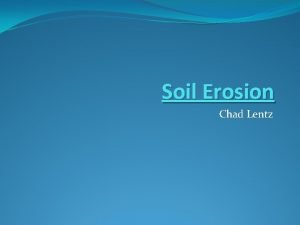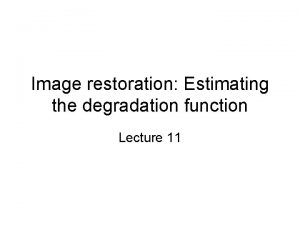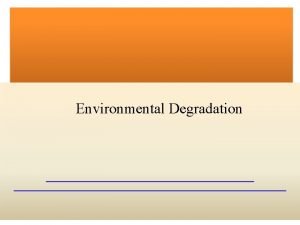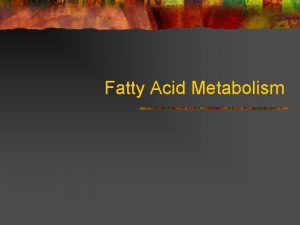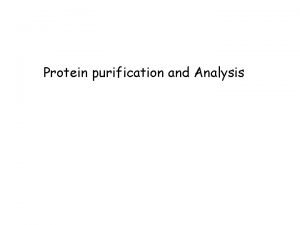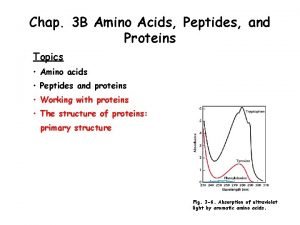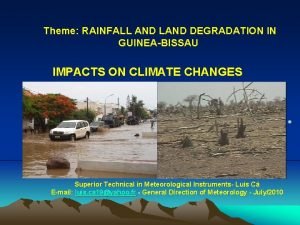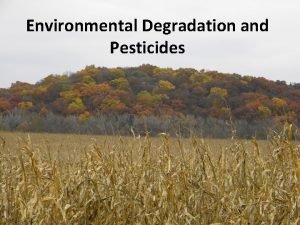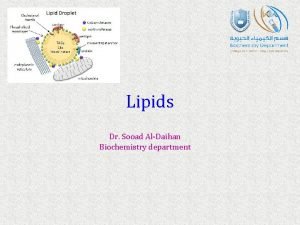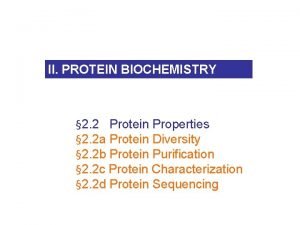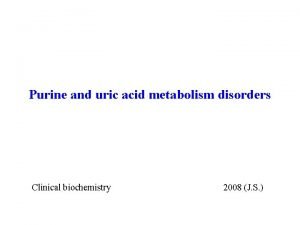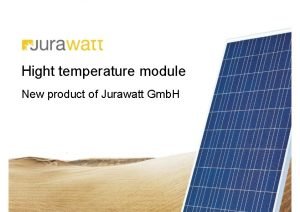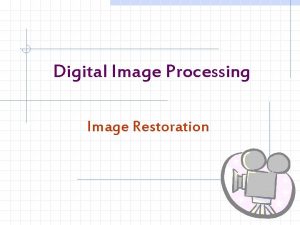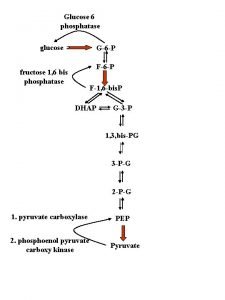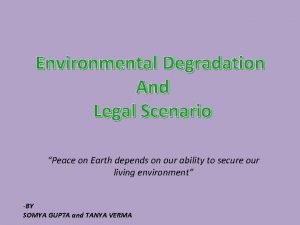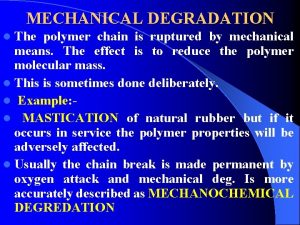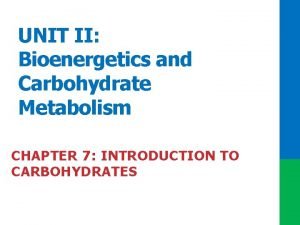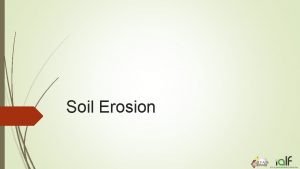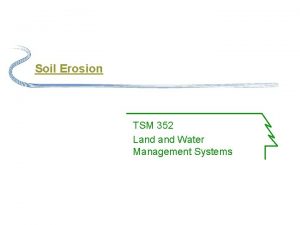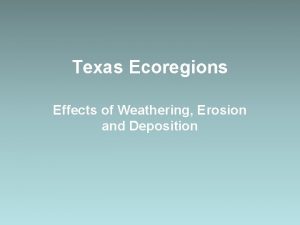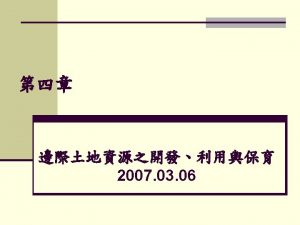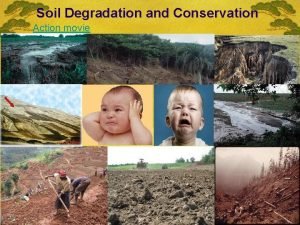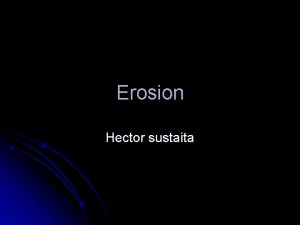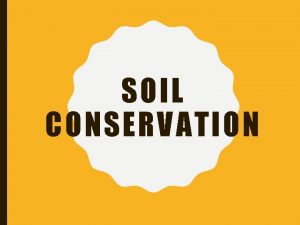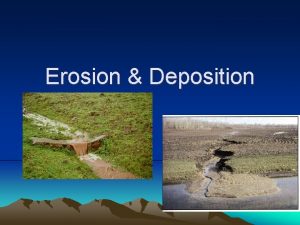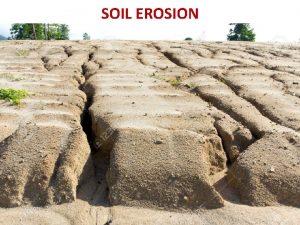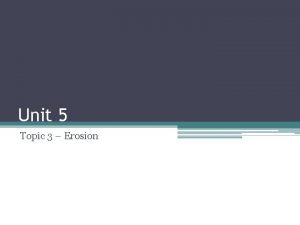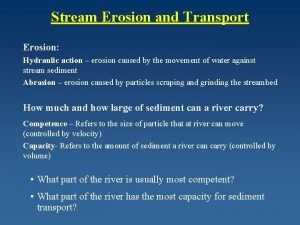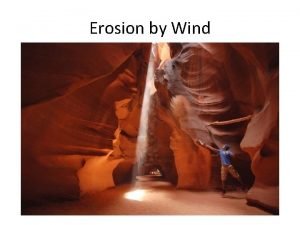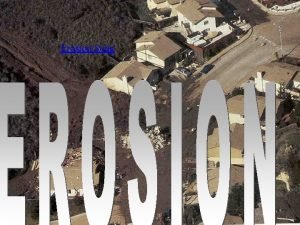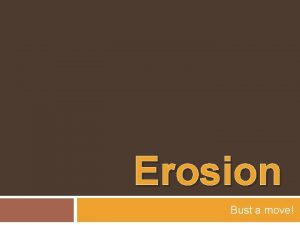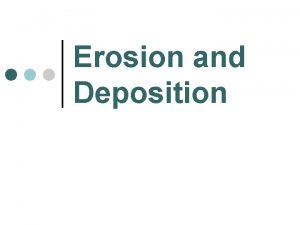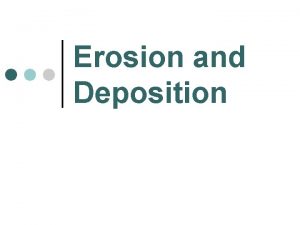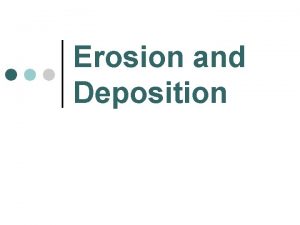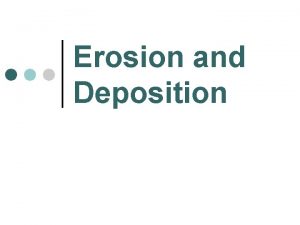Soil Erosion Degradation Soil erosion movement of soil
























- Slides: 24

Soil Erosion & Degradation Soil erosion: movement of soil components, especially litter & topsoil, from one place to another. • losing topsoil makes soil less fertile & less able to hold water; • while soil is a potentially renewable resource, it takes long periods of time to form topsoil, typically 200– 1000 years to form 2. 5 centimeters (1 inch) of topsoil; • topsoil is eroding faster than it forms in about one

Soil Erosion & Degradation Major areas of the world are threatened by serious soil erosion.

Soil Erosion & Degradation • Farming practices such as plowing and tilling can leave soil uncovered and loose. • These practices leaves soil vulnerable to water and wind Disk Harrow erosion. Tilling

Soil Erosion & Degradation: Wind & Water

Soil Erosion & Degradation

Dust Bowl During the 1930 s, a combination of drought & poor soil conservation led to severe wind erosion of topsoil in what is known as the Dust Bowl of the Great Plains.

Desertification of arid & semiarid lands results when land productivity drops markedly. Causes: • overgrazing; • deforestation & devegetation; • surface mining; • poor irrigation techniques; • salt buildup; • farming on unsuitable terrain; • soil compaction by farm machinery.

Dust Storms Dust Devil

Dust Storms

Dust Storms

Dust Storms Asia Saudi Arabia Sahara

Problems of Irrigation: Salinization: salt build-up in irrigated lands to levels that decrease crop yields.

Problems of Irrigation: Waterlogging results when excess irrigation water raises the water table & lowers crop productivity.

Types of erosion: • Sheet Erosion: Surface water runs down a slope and erodes layers of topsoil off; • Rill Erosion: fast-flowing water cuts small rivulets or channels in soil; • Gully Erosion: rivulets become bigger and join to form gullies

Soil conservation: reducing soil erosion & restoring soil fertility. • conservation–tillage farming minimizes soil disturbance. • use of special tillers which loosen subsurface soil without turning over top soil and residues; • no–till methods that inject seeds, fertilizers, & herbicides in unplowed soil; By maintaining a layer of crop residue on 30 % or more of the surface, reduces water erosion. Crop residue


Soil Conservation • terracing protects steep slopes; retains water for crops at each level and reduces erosion by controlling runoff; • contour farming follows natural land contours; each row of crops acts as a dam to slow water runoff down slopes

Soil Conservation • strip cropping maintains strips of different vegetation between crops; keeps soil covered, slows erosion, and some nitrogen-fixing plants ( such as legumes) can increase fertility.

Soil Conservation • alley cropping grows crops between rows of trees: The result is better erosion control, improved crop production, supplemental income, and habitat and travel corridors for wildlife.

Soil Conservation • wind breaks uses trees between fields to slow wind erosion • use of organic fertilizer (manure, "green manure" = plant matter, & compost);

Soil Conservation crop rotation : planting crops that restore nutrients; & decrease in use of inorganic fertilizers all help to restore fertility.

Soil Conservation • Good irrigation techniques can help slow wind and water erosion without waterlogging, causing excess runoff, or depleting water supplies • Grass in waterway slows water erosion.

Soil Erosion & Degradation

 Control measures of soil erosion slideshare
Control measures of soil erosion slideshare Light induced degradation
Light induced degradation Estimation of degradation function
Estimation of degradation function Linear position invariant degradation
Linear position invariant degradation How environmental degradation occurs
How environmental degradation occurs Metabolismn
Metabolismn Edman degradation
Edman degradation Edman degradation
Edman degradation Edman degradation steps
Edman degradation steps Land degradation definition
Land degradation definition Importance of environmental degradation
Importance of environmental degradation Tag degradation
Tag degradation Edman degradation
Edman degradation Purines
Purines Potential induced degradation
Potential induced degradation Starch degradation
Starch degradation Optimum notch filter in digital image processing
Optimum notch filter in digital image processing Glycogen degradation
Glycogen degradation Conclusion of environmental degradation
Conclusion of environmental degradation Mechanical degradation
Mechanical degradation Abnormal degradation of disaccharides
Abnormal degradation of disaccharides Detachment transportation and deposition
Detachment transportation and deposition Soil erosion def
Soil erosion def Soil erosion
Soil erosion South texas brush country weathering
South texas brush country weathering
